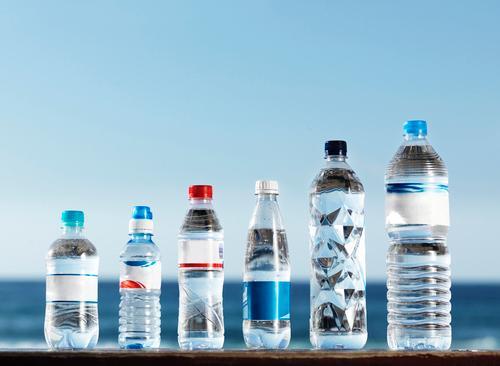
Photo by Henrik Sorensen/Digital Vision/Getty Images
A few years back, rumors circulated thatandnbsp;http://www.breastcancerinformationhelp.com/breast_cancer_bpa_dioxin_plastic_bottles.htmlSheryl Crow claimed drinking bottled water left in a hot car had given her breast cancer.andnbsp;The result? A fresh wave of good, old-fashioned American fear. Since then, the worry overandnbsp;plastic bottles leaching dangerous chemicals into our water has never quite disappeared вҖ” and perhaps for good reason, suggests a new study published in the September edition ofandnbsp;http://www.ncbi.nlm.nih.gov/pubmed/24907857Environmental Pollution.
Scientists from Nanjing University in China and the University of Florida investigated the effects of storing 16 brands of bottled water (all sold in China) at three temperatures: 39 degreesandnbsp;F, 77 degrees F, and 158 degrees F, intended to mimic the temperatures of a refrigerator, a standard room, and the inside of a car, respectively. вҖңBased on the literature, that is a temperature thatвҖҷs reachable on a hot summer day in a car,вҖқ study author Lena Ma told Yahoo Health.
Related:andnbsp;https://www.yahoo.com/health/why-ramen-noodles-could-cut-your-life-short-94747327572.htmlWhy Ramen Noodles Could Cut Your Life Short
The researchers checked the levels of two substances вҖ”http://water.epa.gov/drink/contaminants/basicinformation/antimony.cfm#fourantimonyandnbsp;and bisphenol A (BPA) вҖ” after one, two, and four weeks. Antimony, a trace heavy ####l, has been found to play a role in lung, heart, and gastrointestinal diseases, according to aandnbsp;http://www.ncbi.nlm.nih.gov/pmc/articles/PMC2822166/2009 study review.andnbsp;http://www.inchem.org/documents/iarc/vol47/47-11.htmlThe International Agency for Research on Cancerandnbsp;classifies one form of the ####l, called antimony trioxide, as a вҖңpossible carcinogen.вҖқ BPA, meanwhile, is a chemical that can mimic estrogen in the body and which is found in some plastics; itвҖҷs been banned for use by the FDA in baby bottles and sippy cups.
The researchers found that as the temperature rose and time passed, increasingly high levels of antimony were detectable in the bottles of water. Specifically, at 77В° F, the release of antimony increased by as much as twofold over that at the cooler temperature вҖ” although the levels of the trace ####l varied by brand, increasing significantly at 77 degrees F in only six out of 16 brands.
Related:andnbsp;https://www.yahoo.com/health/coconut-water-101-when-coconut-water-hit-the-93122409092.htmlThe Nine Lives of Coconut Water
BPA levels, meanwhile, went up in only three brands at this temperature, though the concentration still wasnвҖҷt high enough to cause concern, Ma said. But the presence of BPA in bottled water, period, is still something of a mystery: вҖңIn theory, the plastic should not contain BPA,вҖқ she said. One explanation, she noted, is that вҖңduring the manufacturing process, especially if you use recycled plastics, you may find trace amounts of BPA. ItвҖҷs an impurity.вҖқ andnbsp;
At 158 degrees F вҖ” the hot-car condition вҖ” antimony concentrations consistently increased, with up to a 319-fold boost in levels of the ####l, compared with levels in the refrigerator condition. The highest level measured was .00026 milligrams per liter of water, which is still lower than theandnbsp;http://water.epa.gov/drink/contaminants/basicinformation/antimony.cfmEPAвҖҷs legal limitandnbsp;of .0006 milligrams per liter for drinking water. However, other countries, such as Japan, have set stricter limits on the substance.
The scientists estimate that, worst-case scenario, drinking the most heavily contaminated brand of bottled water could mean consuming .0004andnbsp;mg of antimony per kilogram of body weight each day, which they said may pose a health risk, especially for children. Another factor to consider: Calcium вҖ” often found in bottled mineral water вҖ” has been shown to enhance the release of antimony. вҖңTherefore,вҖқ the researchers wrote, вҖңthe health risk caused by [antimony] release from PET bottles in this study may be underestimated.вҖқandnbsp;
Why is antimony even in plastic bottles? The trace ####l is necessary for the manufacture of polyethylene terephthalate, or PET, the most popular material for food and beverage packaging. Although the bottled water in the study was from China, вҖңin the U.S., you also have antimony in the plastic,вҖқ said Ma. вҖңBut I cannot say that what you find in China is what youвҖҷre going to find in the U.S.вҖқ Past research has, in fact, shown variability in the quality of PET plastics from different countries.
Despite the relatively low levels of the substances studied, Ma still advises tossing вҖ” rather than drinking вҖ” water thatвҖҷs been stored in hot conditions. вҖңIf you have bottled water in a hot temperature, the antimonyandnbsp;willandnbsp;release from the plastic and get into your water,вҖқ she said. Her advice: Store your 24-pack of bottled water in a refrigerator or in room-temperature conditions.andnbsp;
Should you worry about one quick swig of warmed-up water? вҖңIf you drink [a hot bottle of water] once in a while, I donвҖҷt think thatвҖҷs a concern. One is no problem. Even a few is no problem. ItвҖҷs cumulative, вҖқ Ma told Yahoo Health. вҖңI donвҖҷt want to mislead people, saying bottled water is not safe. Bottled water is fine. You can drink it вҖ” just donвҖҷt leave it in a hot temperature for a long time. I think thatвҖҷs the important message.вҖқ